2017, what a year North Korea
North Korea—what a year 2017 has been. It’s easy to lose track of just how much has happened this year, so here’s a recap of the major events. We’ve also provided a look ahead at 2018, which looks to be the year something has to give on North Korea, one way or another. Without further ado…
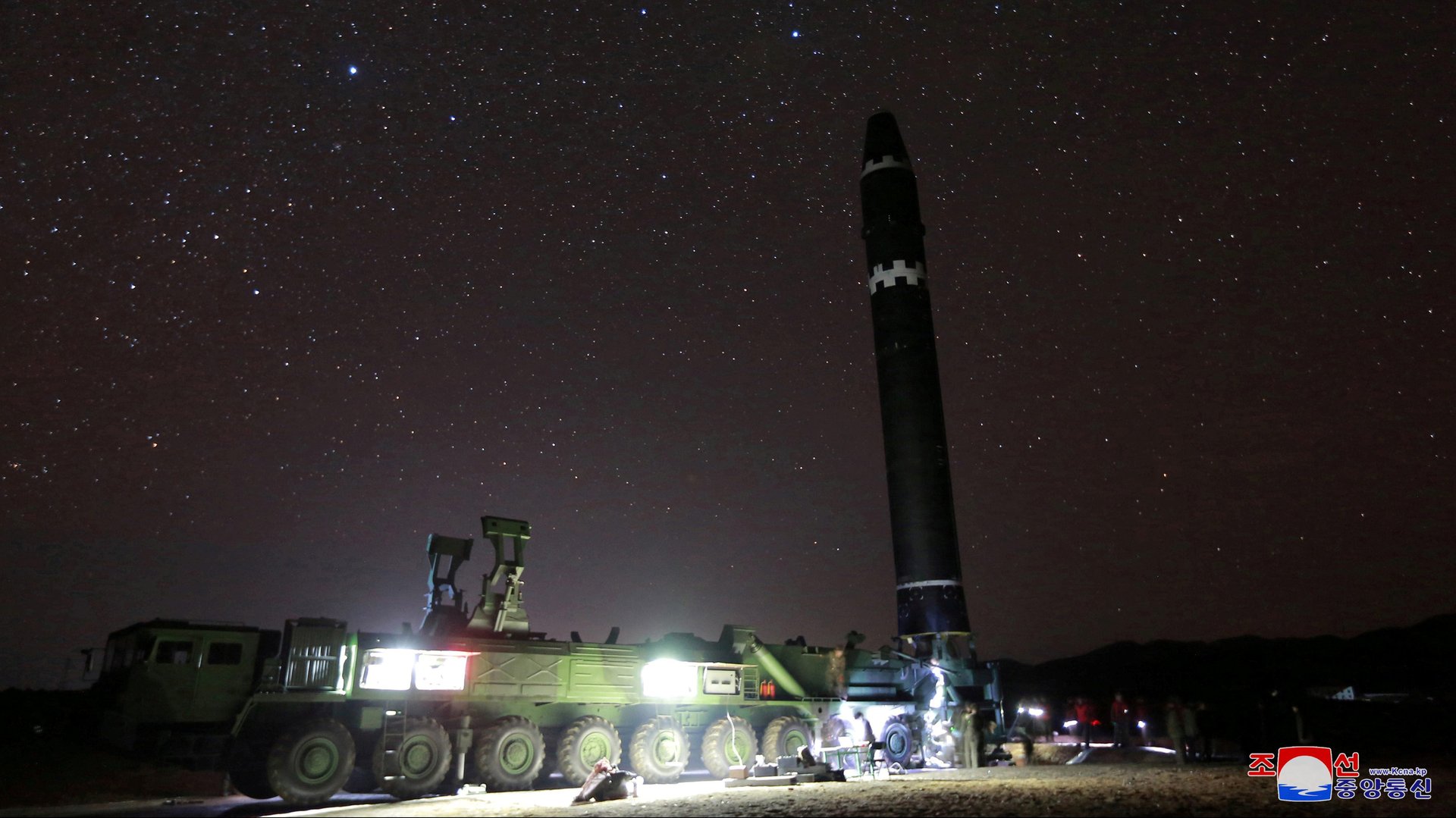

North Korea—what a year 2017 has been. It’s easy to lose track of just how much has happened this year, so here’s a recap of the major events. We’ve also provided a look ahead at 2018, which looks to be the year something has to give on North Korea, one way or another. Without further ado…
North Korea says it’s making final preparations on a missile that can reach the US (Jan. 1). The claim comes despite doubts (paywall) about its technical abilities, and less than a month before Donald Trump takes office. North Korean leader Kim Jong-un says his country may test long-range missiles several times in 2017. It does just that in the months ahead.
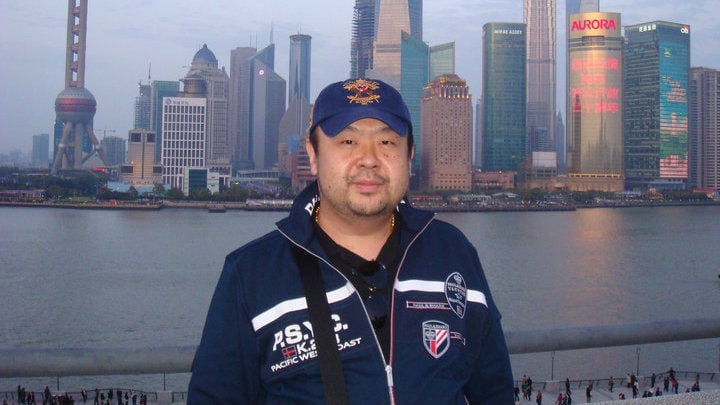
North Korea launches its first missile of the Trump era (Feb. 11). The test comes as Trump treats Japanese prime minister Shinzo Abe to dinner at his Mar-a-Lago club in Florida, turning an al fresco dining area into an impromptu situation room full of onlookers. The missile lands in the Sea of Japan.
Kim Jong-nam, the older half-brother of Kim Jong-un, is murdered in Malaysia (Feb. 13). He dies within 15 minutes of two women rubbing VX nerve-agent chemicals on his face at an airport, despite having a VX antidote with him. In Seoul, an intelligence director testifies to lawmakers that Pyongyang had for years been trying to kill the elder Kim, a potential threat to the supreme leader’s position who’d been living in Macau—and seemed to know his days were numbered.
Tillerson says the US might take pre-emptive action against North Korea (March 17). It’s the first time the Trump administration has said such a thing publicly (paywall). Tillerson adds that negotiations “can only be achieved by denuclearizing, giving up their weapons of mass destruction… Only then will we be prepared to engage them in talks.”

North Korea launches a medium-range missile, saying it can carry a large nuclear warhead (May 14). It calls the test a significant advancement toward its ultimate goal: developing a nuclear-capable intercontinental ballistic missile (ICBM). Experts estimate the Hwasong-12 could have reached Guam—home to US military bases—on a standard trajectory. Sent instead on lofted trajectory, it plunks into the Sea of Japan.
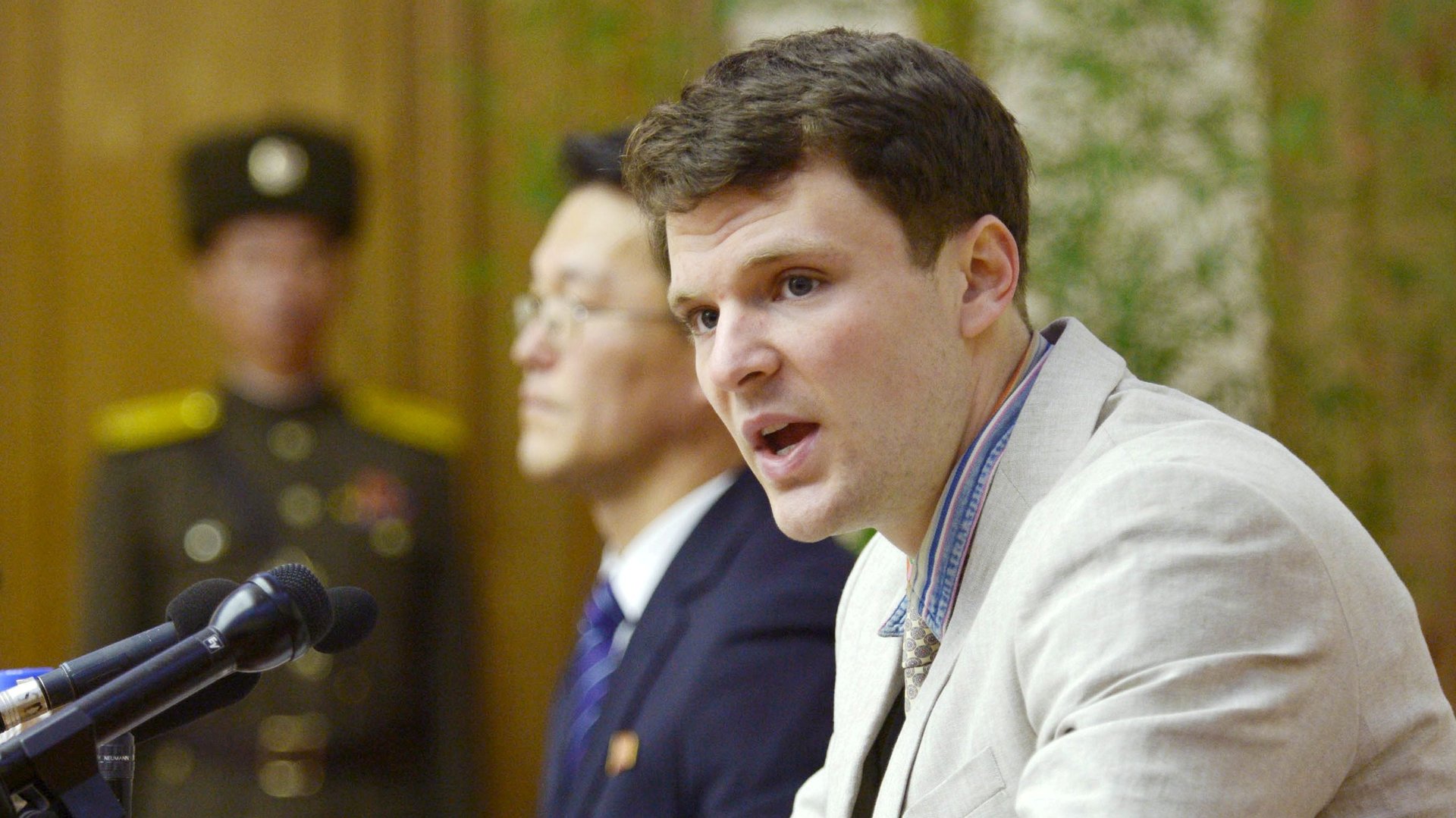
American student Otto Warmbier dies (June 19). His death comes less than a week after being released in a coma by authorities in North Korea, who sentenced him to 15 years of hard labor in March 2016 for allegedly attempting to steal a propaganda poster while in Pyongyang as a tourist.
North Korea launches its first ICBM (July 4). Kim calls the missile a “gift for the American bastards” on the US’s Independence Day. Experts estimate the missile could have hit Alaska on a standard trajectory. The missile, a Hwasong-14, lands in the Sea of Japan.
North Korea fires off its second ICBM (July 28). The launch time and location, in the wee hours and near the Chinese border, seem designed to make the US think twice about a preemptive strike, emphasizing the difficulty of neutralizing every retaliatory threat—and the risk of angering Beijing. Experts estimate the missile, another Hwasong-14, could have reached most of the continental US on a standard trajectory.
The US bans Americans from traveling to North Korea (Aug. 2). Authorities cite the risk of long-term detention, warning US passport holders to leave the country before the measure’s start date of Sept. 1.
North Korea launches a missile over Japan (Aug. 29). The flight path over another country’s airspace is unusual (paywall) for North Korea. Pyongyang warns it’s a prelude to operations directed at Guam.
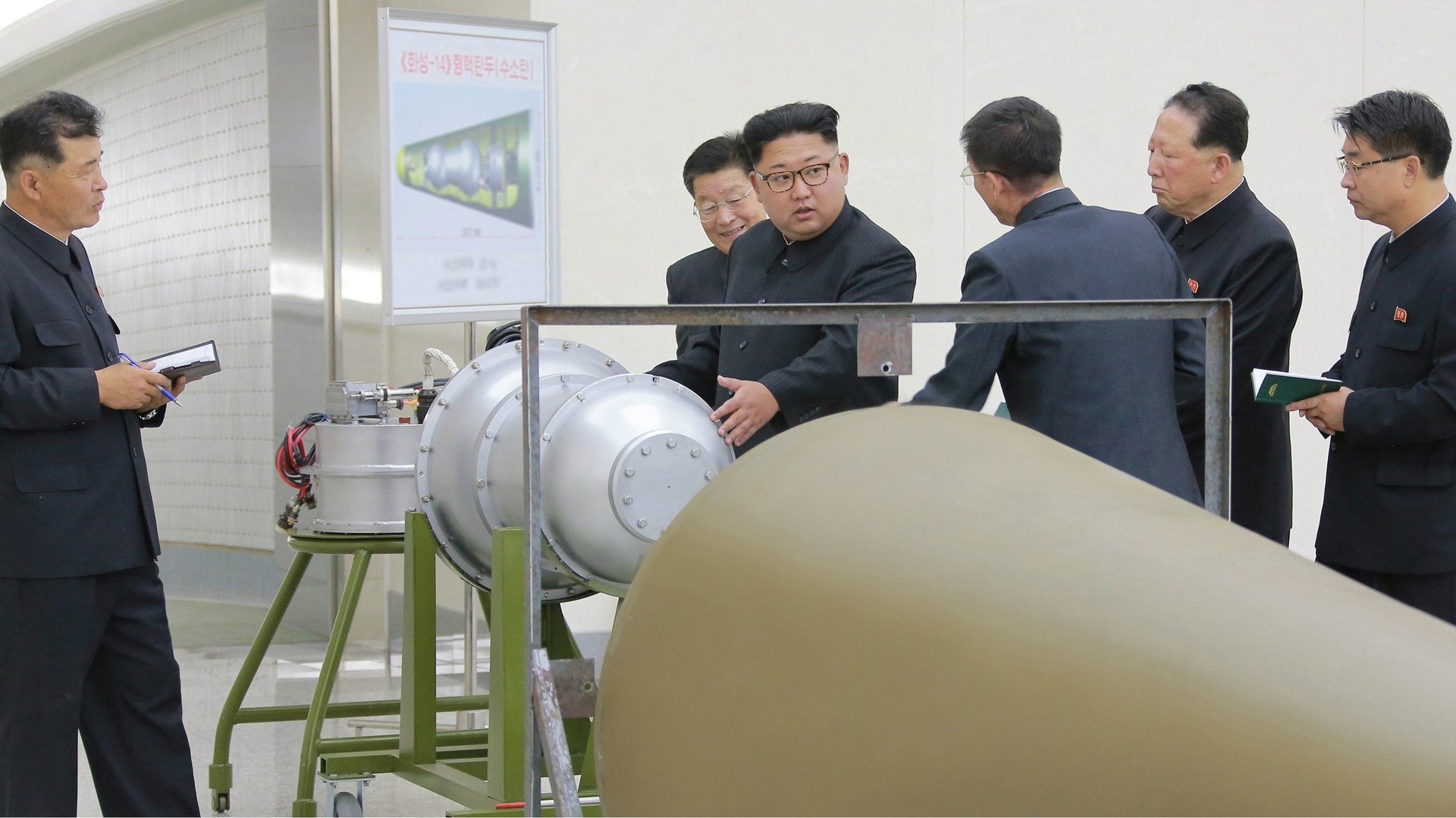
North Korea conducts its sixth nuclear test—and claims it was a hydrogen bomb (Sept. 3). The underground blast is by far its most powerful ever, with tremors felt in China and South Korea. Experts caution it’s difficult to tell whether it was truly a hydrogen bomb. Throughout the year, it remains unclear whether North Korea has mastered the technology needed to keep a nuclear warhead in working order as it re-enters the atmosphere on an ICBM.
Donald Trump threatens Pyongyang in a speech to the UN (Sept. 19). He says the US will “totally destroy North Korea” if it’s forced to defend itself or its allies, and that options are running out. “Rocket Man is on a suicide mission for himself,” he adds, referring Kim Jong-un.
North Korea responds to Trump’s UN speech with threats of its own (Sept. 22). Kim says of Trump, “I will surely and definitely tame the mentally deranged US dotard with fire.” Foreign minister Ri Yong-ho hints North Korea might consider detonating a hydrogen bomb over the Pacific, proving it can marry its nuclear and missile capabilities.
A North Korean soldier escapes across the DMZ (Nov. 13). He’s shot at about 40 times—and hit five—by the North’s guards. Doctors in Seoul find he’s malnourished and infested with parasitic worms, suggesting dire conditions across the border. In the hospital he asks for Choco Pies, and is promised a lifetime supply by the company that makes them.
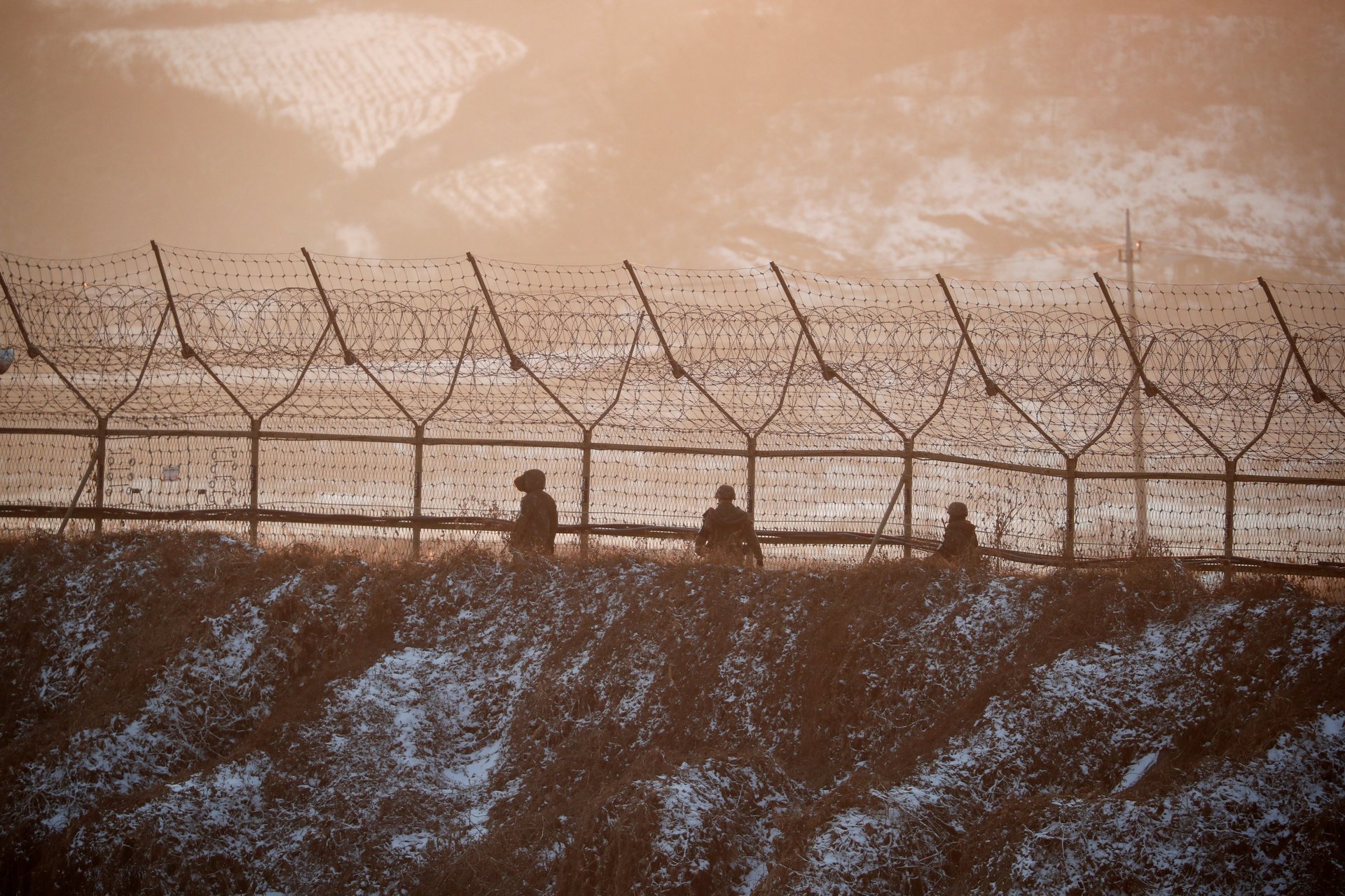
The US adds North Korea back to its list of state sponsors of terrorism (Nov. 20). Though the move allows Americans to impose more sanctions, it’s largely symbolic because heavy sanctions are already in place. George W. Bush’s administration removed North Korea from the list in 2008 after apparent progress on denuclearization talks.
North Korea launches its third ICBM (Nov. 29). It boasts that its new model (the Hwasong-15) features significant improvements over the older one (the Hwasong-14). The missile flies more than 10 times higher than the International Space Station. US experts warn all of America would be within range of the missile were it sent on a standard trajectory.
Lindsey Graham says the families of US military personnel should leave South Korea (Dec. 3). The Republican lawmaker, a member of the Senate Armed Services Committee, says on a Sunday talk show that it’s “crazy to send spouses and children to South Korea given the provocation of North Korea,” adding, “we’re getting close to military conflict.”
The United Nations sends its chief diplomat to Pyongyang (Dec. 5). Jeffrey Feltman describes the four-day visit as ”the most important mission I have ever undertaken,” adding, “I fervently hope that the door to a negotiated solution will now be opened wide.” It’s the highest-level UN visit to North Korea in over six years.
Rex Tillerson says the US is ”ready to have the first meeting without preconditions” (Dec. 12). His comments seem at odds with the White House, which insists its tougher stance hasn’t changed, and with his own March 17 comments (see above). He says that a quiet period of no new testing would be required before talks could start, which sounds like a precondition.
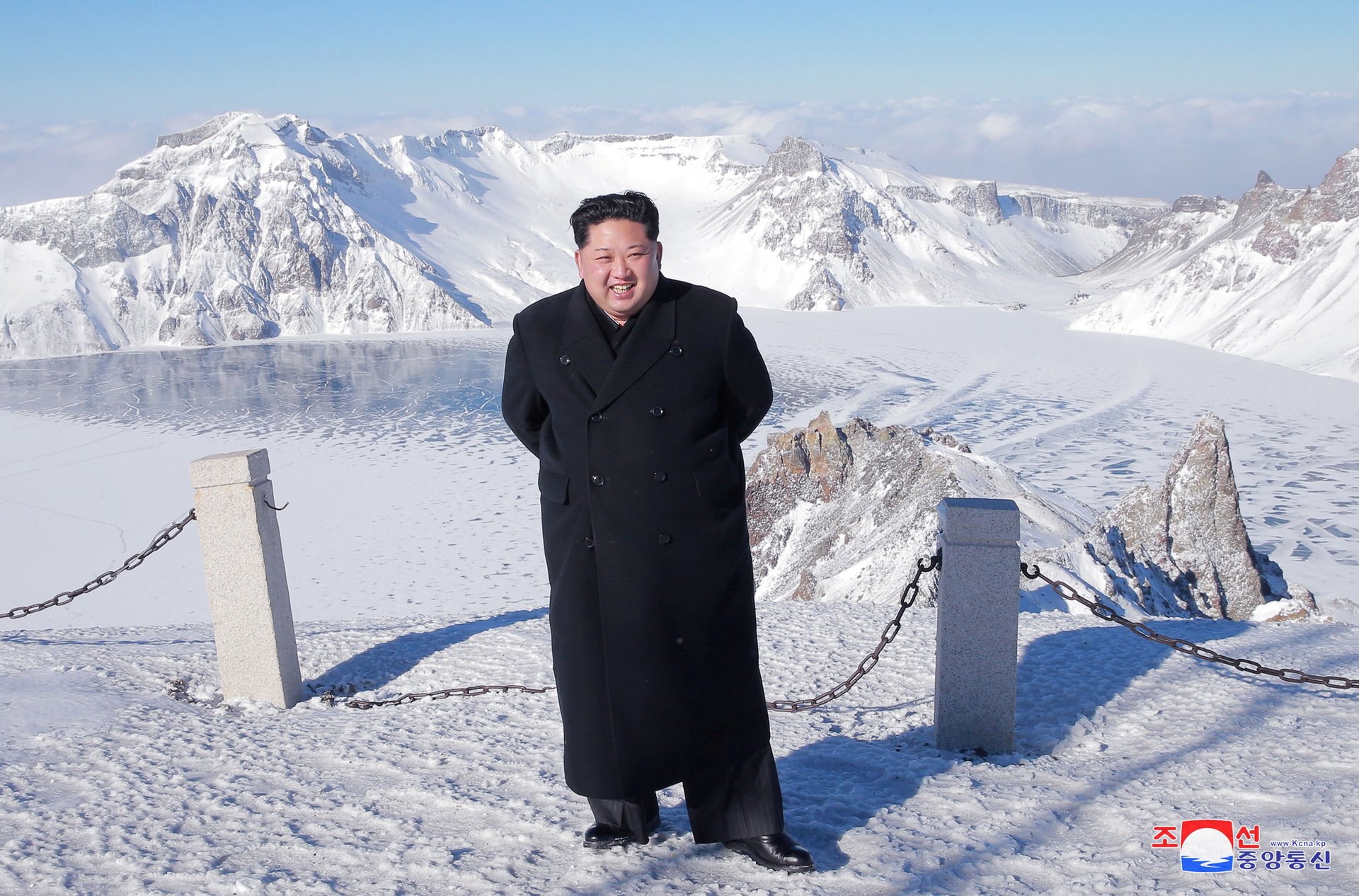
Retired US military leaders urge Trump not to take military action (Dec. 13). Nearly 60 former admirals and generals sign a letter saying he should “explore every possible diplomatic option before it is too late and we find ourselves in a dangerous and preventable war,” adding that ”military options must not be the preferred course of action.”
The US says North Korea was behind the WannaCry ransomware attack (Dec. 18). Thomas P. Bossert, assistant to the president for homeland security and counterterrorism, makes the accusation in a Wall Street Journal column. In May, WannaCry encrypted files on computers globally and charged hundreds of dollars in bitcoin to recover access.
Japan’s cabinet approves the purchase of pricey missile-defense systems from the US (Dec. 19). The move is made in response to the North Korean missile launches near or over Japan in the past year. Defense officials says the two Aegis Ashore systems, together costing about $1.8 billion, would cover the entire country and complement existing missile-defense systems.
Another North Korean soldier escapes across the DMZ (Dec. 21). He takes advantage of thick fog to get across the border unseen. It marks the year’s fourth defection by a soldier and the 15th overall in 2017, compared to one by a soldier and four by civilians in 2016, according to Yonhap.
The UN Security Council adopts new sanctions against North Korea (Dec. 22). The latest measures drastically reduce fuel supplies, tighten shipping restrictions, and call for the expulsion of North Koreans working abroad—an important revenue source for Pyongyang—within 24 months.
Pyongyang rails against the new sanctions (Dec. 25). The Kim regime says it’s a “pipe dream” that North Korea will ever give up its nuclear weapons and calls the latest sanctions an “act of war.” It threatens not only the US with retaliatory action, but also every member of the UN Security Council, which includes neighbors China and Russia.